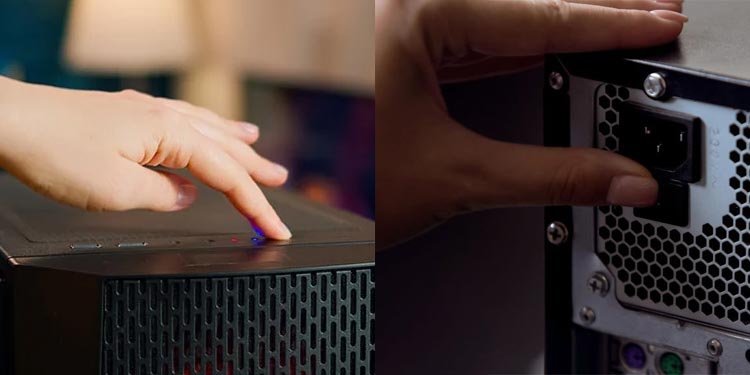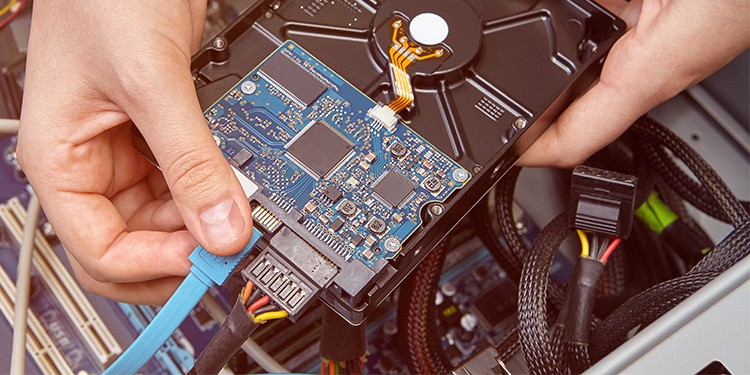What is a DST?
DST means Disk Self Test and refers to a program that HP and others include on their computers to track how well the disk performs. There are two kinds of DST errors you might run into, short and long DSTs. A short DST doesn’t take as much time and usually runs fast during the startup process. If it fails, you’ll see an error message once Windows loads. A long DST not only takes longer but also requires that you aren’t using the computer when it’s running. It can accurately diagnose more issues, but you won’t be able to use the computer quite as quickly.
What Does It Mean if My Short DST Check Fails?
A message saying “your short DST check failed” means the test found problems with the hard drive it tested. Your hard drive could be on the edge of failure, and finding out before it happens might give you a chance to save your data. Remember, once your hard drive stops working, it can be challenging to get the information off it. You always want to back up your data before problems start.
Fixing a Drive After a Failed Short DST Check
There isn’t much you can do to fix the drive itself if it’s damaged. However, sometimes the disk might fail a short DST check because of issues that can be fixed. Try a few different things before you throw in the towel and add a new disk.
Back Up Your Data
You should back up any data you don’t want to lose when you see a message that your drive has failed a short DST check. It’s possible that the problems triggering the failure will lead to your disk drive’s breakdown, and you will lose everything on the drive. While some people use drives with errors for years, you never know when they will stop working. It could be today or tomorrow, or next year. Eventually, it won’t work anymore, and you will lose everything you’ve saved. Start your backups now before you do anything else with the drive. At the very least, get the essential files you want to keep off and save them elsewhere. There’s always a chance that working with your drive could also damage files on it. In short: back up before you begin.
Check for More Information
You can conduct a few tests to get more information about what’s happening with your drive. While one will attempt to repair problems, the other can let you know whether you need to worry more about your drive. This test was removed from Windows as a utility, but you can still run it from an elevated Command Prompt window. The other Windows test that can help is called CHKDSK. This checks your disk for errors, attempts to repair them, and is best performed with a restart so that the disk can be checked without running the operating system. Once the test is done, read the results. If the message says the disk was repaired, look to see whether the short DST test still gives an error message. If it disappears and doesn’t reoccur, CHKDSK may have fixed the issue.
Reconnect the Drive
Another thing that can sometimes cause issues with drives is how they connect to the computer. Cables can degrade over time, and PSUs might stop supplying enough power. Check the full hookup of the hard drive to see whether another factor might be causing errors. To do this, power off your computer, flip the switch on the PSU and disconnect the power from the wall. At this point, you can swap the cables, switch the PSU, or disconnect the drive and plug it into a compatible computer to see whether any errors appear. However, it may not undergo the same checks on a different computer. Swapping hardware to test for issues is probably the quicker and easier method.
What Are Other Signs of An Impending Hard Drive Failure?
If you aren’t sure what to do about your drive and want to keep using it despite the short DST test failure, keep an eye out for other signs the hard drive might be about to fail. Always keep your backups up-to-date until you fix the problem with the hard drive or replace it. Using automatic backups can help make it much easier to stay current.
Repeated BSOD, freezes, shutdowns, and unexplained lag can signal a hard drive’s upcoming death. These problems have many causes, though. You shouldn’t assume it’s the hard drive. If you’ve done a lot of troubleshooting and can’t find the root of the cause, it might be the hard drive.Some hard drives will make odd sounds when they start to fail. This is usually the case with HDDs that have moving parts. Listen for whines, ringing, or grinding sounds.Repeated messages about corrupted data, inaccessible files, or other issues with the saved files could be due to a hard drive dying.Increased heat in your system that can’t be traced to anything else might be due to a hard drive’s failure.
Keep an eye on your system if you notice any of these signs.









